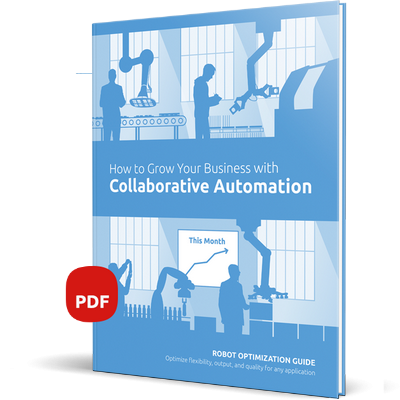#ThoughtsOnRobots: Dan Carney


In this interview with OnRobot, General Manager Dan Carney from Professional Control Corporation (PCC) shares his views on the future of collaborative applications.
According to Dan Carney from US-based system integrator PCC, the demand for and use of collaborative applications will steadily increase because of the worldwide pandemic.
"After the outbreak of Covid-19, there has been a disruption in the economy in many countries which has created an increasing demand for manufacturers to be efficient in their manufacturing operations. The answer is often collaborative applications, especially in small and medium-sized companies."
"Also, a shortage of labor, particularly in skilled positions such as machinists, is challenging business owners to get more out of the resources they have. Collaborative robot automation is a great way to supplement that labor."
Repurposed in a few hours
The biggest advantage of collaborative applications is the great flexibility they offer.
"An industrial robot can take weeks or months to deploy and can only do one process, whereas collaborative applications are flexible and can be repurposed to another task in a few hours. You can use the collaborative application for one process today and another next month, and that's a big factor for many manufacturers."
"Also, collaborative applications don't require big safety cages like industrial robots which makes them easier to deploy and fit into tighter production environments."
Quickly up and running
When deploying a collaborative application, it is critical to start with a simple process before tackling more complicated operations.
"My advice to new customers wanting to implement collaborative automation is always the same: Pick the simplest task in your operation and execute it well. Once it's successfully up and running, you can move on to more complex processes. Taking that into consideration from the start will build confidence in the overall process. In my experience, it's often possible to deploy the first application in as little as a day or two."
Tremendous consistency
Among the various types of collaborative applications, automating tasks that demand high accuracy like polishing and deburring is key.
"You get tremendous consistency with these applications, for example when an object needs to be deburred. When three different operators manually do this process with a grinding wheel, you get different results, but when a collaborative robot is implemented, the result is highly repeatable."
A more satisfied workforce
Besides higher efficiency and repeatable results, collaborative applications can create a production environment with more satisfied workers as well.
"When I am talking with business owners about where to consider automation, I always ask them to think about the processes their people are not as excited about - namely the three D's, dirty, dull and dangerous. Quite often these processes are better for automation and the human worker can focus on higher-value tasks. This makes the overall production environment more efficient and has the added benefit of a more satisfied workforce."
-----------------------------------------------------------------------
#ThoughtsOnRobots

|
Jak rozwijać firmę za pomocą aplikacji współpracujących
Dzięki inteligentniejszym narzędziom o większych możliwościach dostosowania, roboty mogą obecnie pracować przy większej prędkości, sile i dokładności oraz zwiększonemu bezpieczeństwu, wykonując szeroki zakres zadań przy jednoczesnym maksymalizowaniu zwrotu z inwestycji. Pobierz nasz bezpłatny e-book i sprawdź, jak umożliwić szybszą produkcję przy niższych kosztach.
POBIERZ BEZPŁATNY eBOOK
|

|

